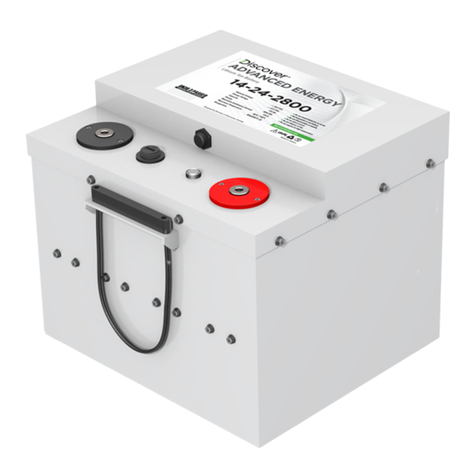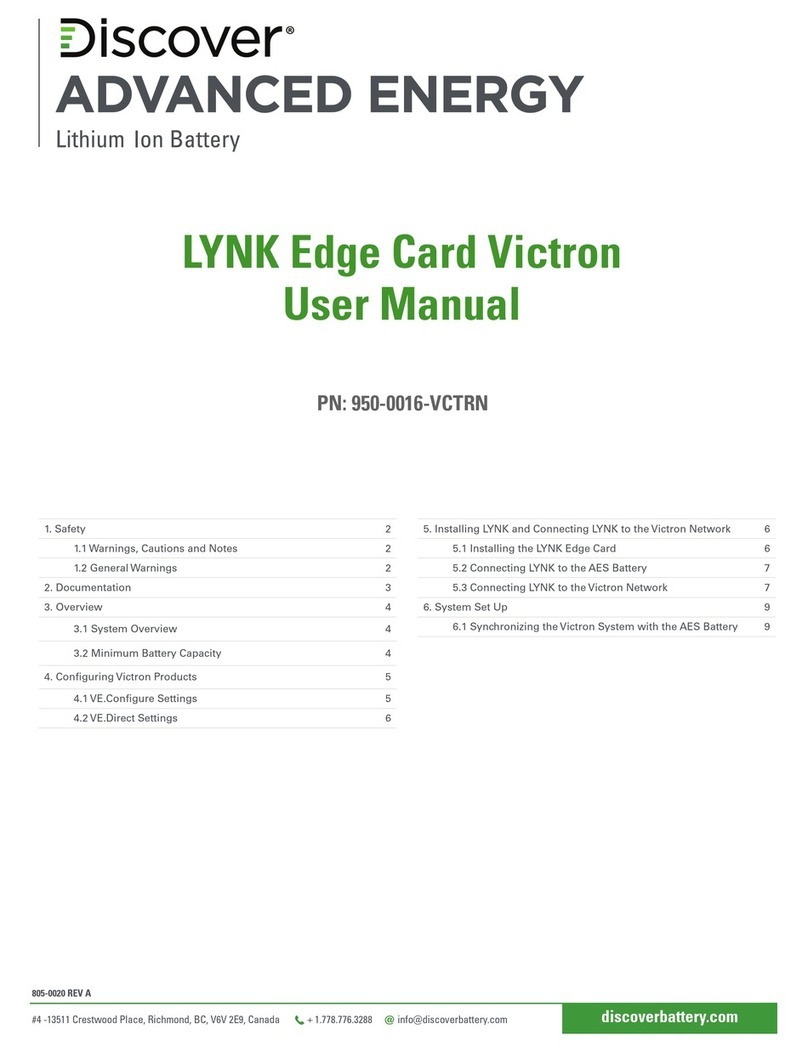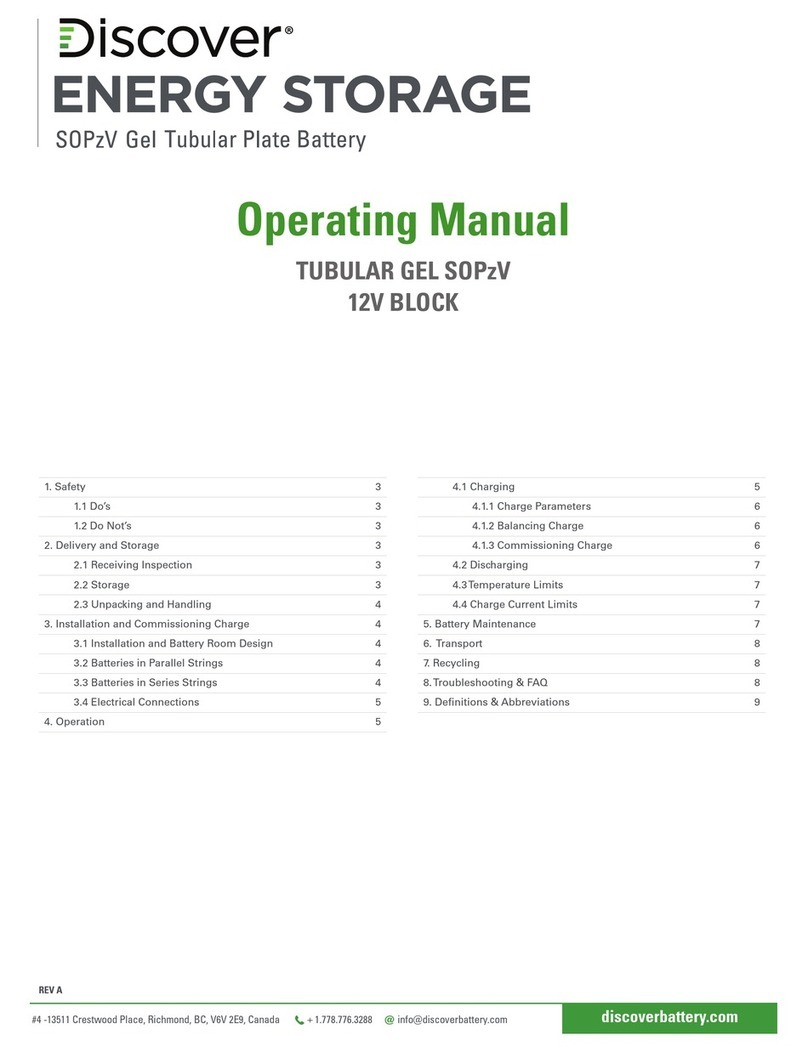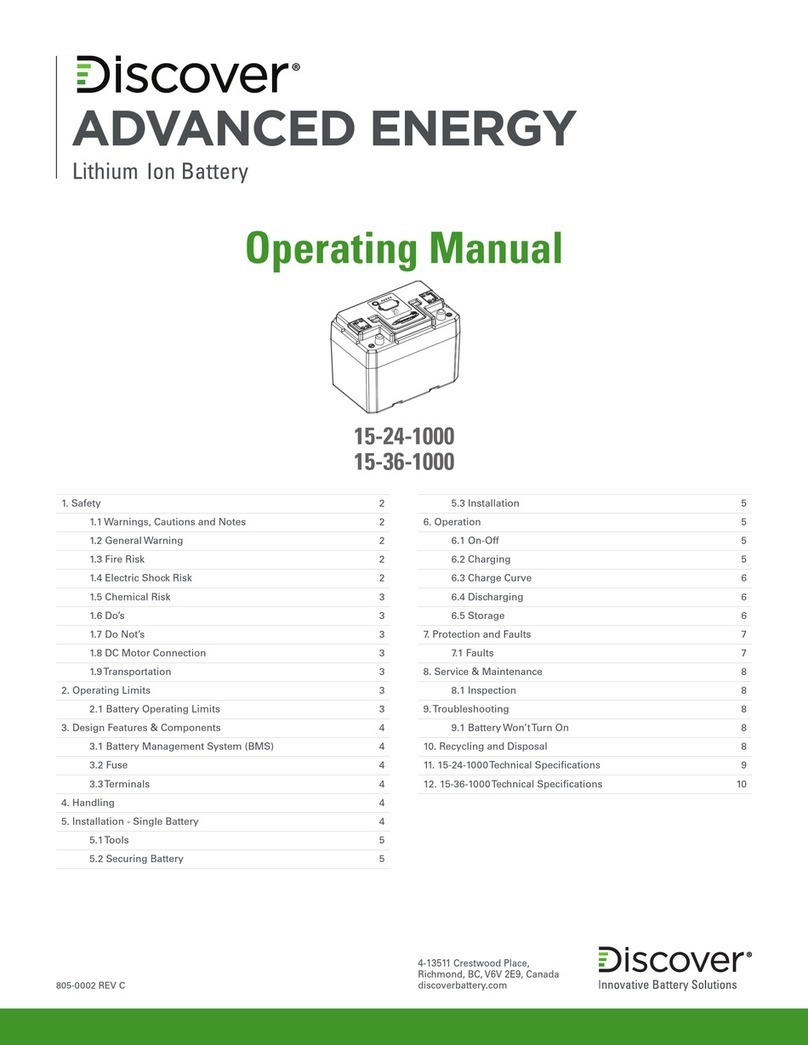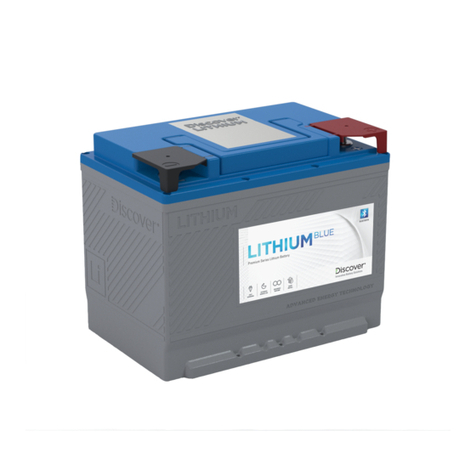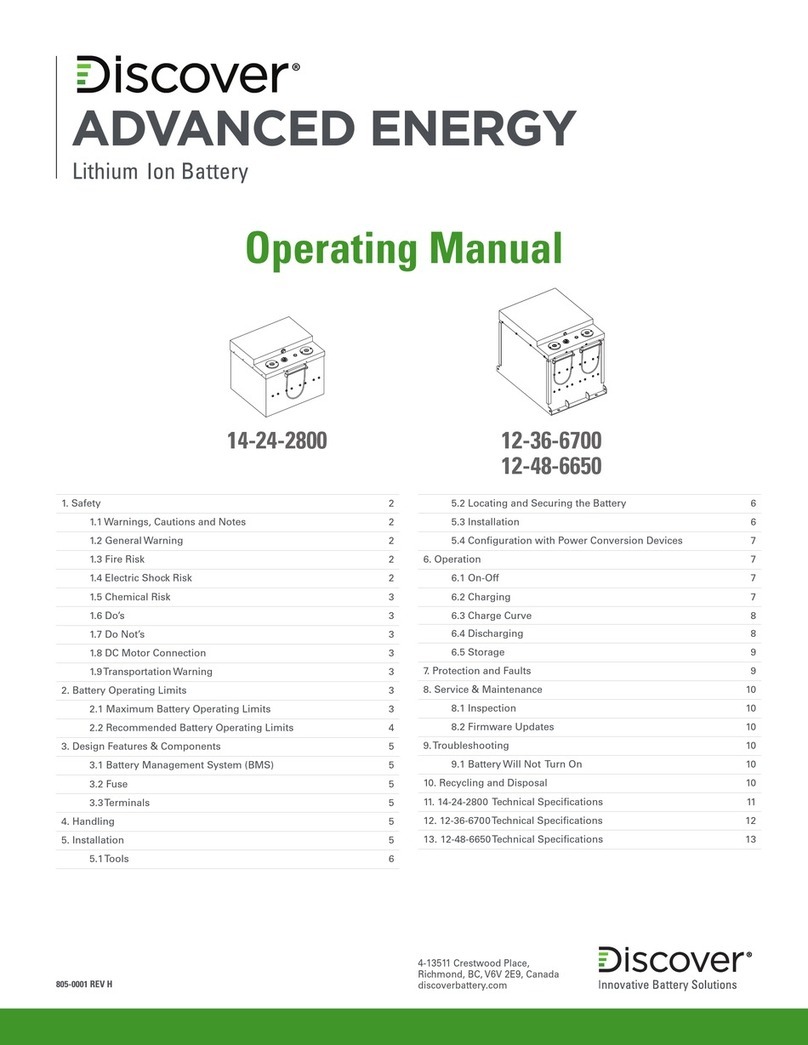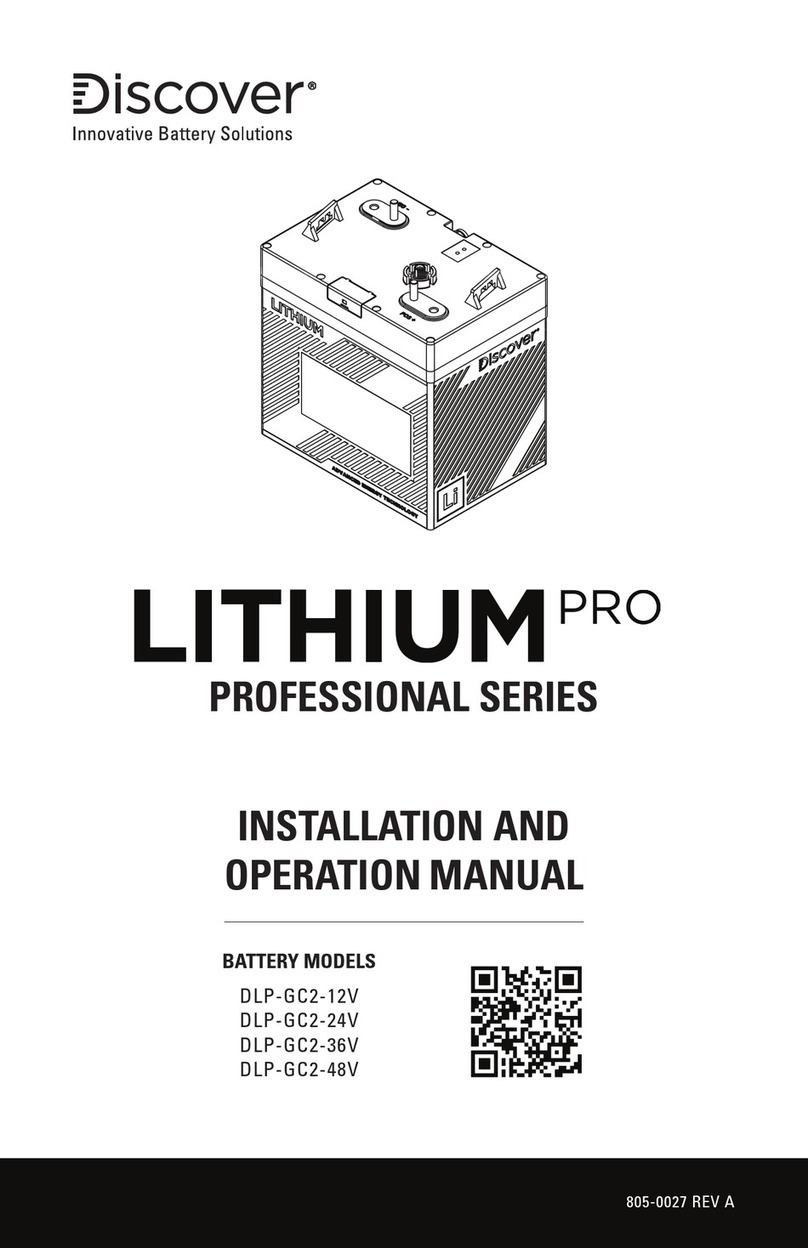
discoverbattery.com
10
• Loose connections
• Over-tightened connections
• Improper sized cables (too small).
• Corroded connections
• Improper use of washers/lock washers.
• Too many connections on the same terminal
WHY DOTHE BATTERIES BULGE?
• Some case bulging can happen and is normal during battery charging.
• If case bulging is a concern upon receipt of a new product, please notify your Distributor immediately
• In the case of excessive bulging- your batteries may have been exposed to temperatures of over 50°C (122°F) or may have been
overcharged. Both conditions may cause the plates/chassis to swell and expand. If this occurs, the batteries may fail prematurely.
• The batteries may have frozen due to excessive exposure to cold temperatures.
To prevent excessive bulging, you need to take the following precautions:
• Use the right type of charger and charge algorithm that is fully compatible with the battery
• Ensure proper polarity when connecting the charger to the battery
• Don’t short-circuit the battery
• Don’t expose battery to temperatures of over 50°C (122°F) and prevent battery from freezing
WHAT CAUSES A BATTERY TO LOSE CAPACITY?
Every lead acid loses capacity over its lifetime. A loss of capacity may indicate the battery is cycled out and reached its end of life.
Capacity loss may also occur due to sulphation, overheating, or over-discharging. If there is capacity loss, the battery bank may no
longer support an increase in load.To prevent premature capacity loss:
• Use the right type of charger and charge algorithm that is fully compatible with the battery
• Verify the temperature sensors are properly mounted and the operation settings are adjusted to the appropriate battery
temperature
WHY DOESTHE VOLTAGE RISE QUICKLY CAUSINGTHE POWER CONVERSION DEVICETO SHUT OFF WHEN I BEGINTO CHARGE
MY BATTERY BANK?
This is often an indication of sulphated batteries which can be confirmed by completing a load test
• An increase in Absorption time may be necessary to sufficiently charge the battery to full SOC.
WHY ISTHE CHARGING CURRENTTOTHE BATTERY BANK SO LOW?
The charging current will decrease as the batteries become fully charged. If the charge current is low, the end of charge cycle may
have been reached. Verify that the charger is near the end of the Absorption phase or in Float voltage phase. If so, low current is
normal at this stage of charging.
• The battery bank self-regulates charge current.The voltage can be controlled and adjusted to a high or low setting, however
the amp output to the battery bank cannot be controlled and will drop as the batteries reach a full state of charge.
• When the charge current decreases to 1% of the battery C20 capacity, the charge is essentially complete.
WHY DOESTHE VOLTAGE RISE QUICKLY CAUSINGTHE CHARGERTO SHUT OFF WHEN I BEGINTO CHARGE MY BATTERY BANK?
This is often an indication of sulphated batteries which can be confirmed by completing a load test.
• An increase in Absorption time may be necessary to sufficiently charge the battery to full SOC.
WHY DOESTHE BATTERY BANK NOT REACHTHE BULK VOLTAGE SETTING WHEN CHARGING?
If the system is not reaching the Bulk voltage, the charger voltage and/or Amp output to the battery bank may be too low.To ensure
sufficient charge, the output should be approximately 10%-25% of the C20 capacity rating of the battery bank. Another cause may be
from DC loads running on the system during the charge cycle and reducing the current supplied to the battery bank.
• Verify that the charging settings meet the recommended charging parameters and that the charger output (Amps) is
sufficient to meet the capacity requirements of the battery bank.
WHAT DO I DO IFTHE BATTERYTEMPERATURES ARE VERY HIGH?
If at or nearing 50˚C (122˚F), shut off the charger and allow the batteries to cool. If a single battery or cell in a string is hot, this may
9
